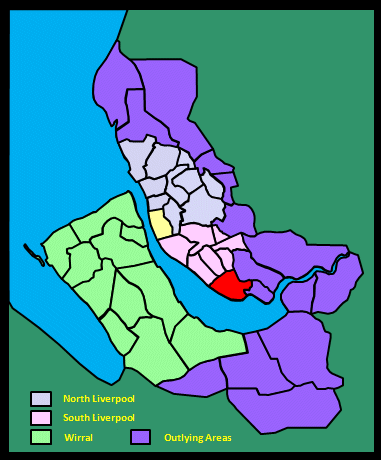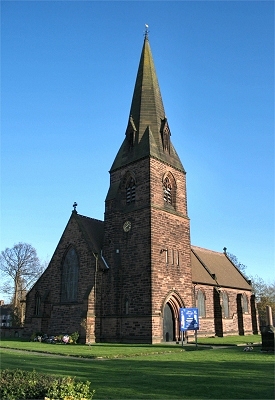 |
All Saints Church, Speke
The noble and elegant church of All Saints was built in 1876 and boasts some fine stained glass. Until the early 20th Century, Speke was just a tiny hamlet, the few remains of which are in the immediate vicinity of the church. In the 1920s, Liverpool Corporation needed to build a new housing estate to re-house workers from other parts of Liverpool and to serve the growing industrial estate at Speke. A purpose-built community was planned and, in 1929, Liverpool Corporation bought the land; work began in 1937. The estate was designed using the Garden City model. During and after World War II, many more people moved here from the bombed areas of the city. An ancient scouse joke follows. Posh bloke: 'I say, young man, is this bus going to Speke?' Scouser: 'What d'yer think I am, mate, a friggin' ventriloquist?' |
|
Speke in Lewis's Topographical Dictionary of England (1848)
The Hall, now the residence of Joseph Brereton, Esq., is a timber and plaster building, with a picturesque stone porch, bearing the date 1598, conducting to an inner court where are two venerable yew-trees. The great hall is very lofty, with wainscot and a ceiling of oak, and having a mantelpiece brought from Holyrood: at each angle of the southern wall, within the court, are two spacious corbelled windows, one of which lights the hall. The house was originally surrounded by a moat, of which the outlines remain, and over which a bridge leads to the principal entrance. The whole forms a highly interesting specimen of old English domestic architecture. The township is situated on the Mersey, and [...] the scenery over the Mersey commands a beautiful and extensive view of Runcorn, Frodsham, and the Welsh hills. A quarry here supplies a stone used for draining. |
Speke in the Victoria History of the County of Lancaster (1907)
This district contains some of the best wheat growing land in the hundred, and has a considerable river frontage opposite the widest portion of the River Mersey. There are scattered plantations amongst open fields, where barley and oats as well as wheat grow well in light, sandy, or stiff clay soils. There are no brooks. The village of Speke consists of a small group of cottages near the church, a mile from a railway station. Other houses are scattered thinly over the district. The river bank in places is flat, but principally consists of high clay banks. Upon and about these the botanist may find many plants locally uncommon. [...] the boundary of Speke, Halewood, and Hale there is a piece of land called Conleach. Here formal challenge fights used to take place between the inhabitants of the adjoining villages. |
Rev Paterson writing in the 1930 Speke Parish Annual Magazine
Another year has passed and the quiet village life goes on, awaiting the maturing of plans to take away its charm for us, and for the thousands of people who wander through its winding lanes. Not a word appears from any authority of the loss to South Liverpool which is inevitable when green fields, the hedges, the lanes and the undeveloped shore have vanished. But are the lanes and hedges of Speke - these in themselves beautiful and the product of years of attention and labour - even considered in the plans so far suggested? Or is it merely a question of a map and a ruler with the beautiful village Church at the centre, and some of the priceless cultivated land of England to be divided up and covered with straight roads with bricks and mortar in between? |
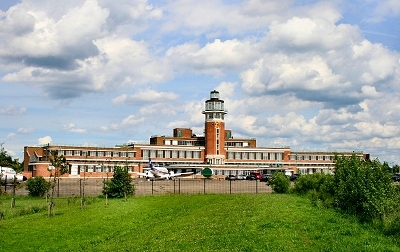 |
Liverpool John Lennon Airport
Liverpool's original purpose-built terminal building, designed by Edward Bloomfield, was constructed in 1937-9. It was superceded in 1986 by a new terminal to the south-east, which underwent a major rebuild in 2000-2 to become Liverpool John Lennnon Airport. The original building was converted in 1998-2001 into the Liverpool Marriott Hotel South. According to the Pevsner Guide, it embodied 'the most advanced thinking of the time, and [is] now the most coherent example of an early purpose-built airport surviving in Europe'. It was not the first terminal building on the site. From the late 1920s, Liverpool Corporation aspired to owning the premier air junction in the north of England. The location was chosen because it was flat and free from fog. When the airport opened in 1933, modified farm buildings served as terminals and hangars. The new buildings were closely modelled on Hamburg's 1929 Fuhlsbüttel airport, which also had matching hangars flanking a curving terminal, tiered observation decks and a central control tower. The design was without parallel in pre-war Britain. |
|
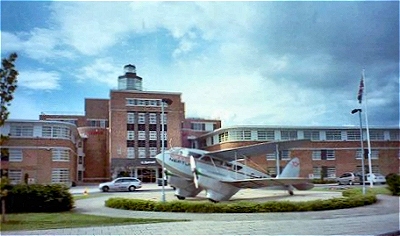 |
Liverpool John Lennon Airport
My thanks to Brian Seddon for this photograph. |
 |
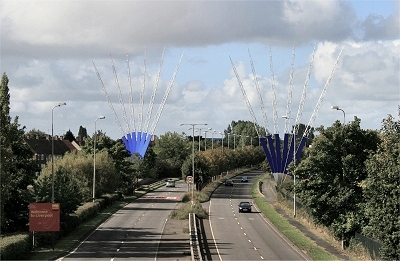 |
The Mersey Wave, Speke
The Mersey Wave is touted as Liverpool's answer to Antony Gormley's Angel of the North, though I doubt it has become as iconic as that famous work. It was designed by Czech-born lighting artist Peter Fink and urban designer Igor Marko. It is 200 ft (60 m) long and 100 ft (30 m) high. It consists of 12 giant aluminium fins, each weighing over 3 tons, which have been set at different angles. Apparently it is the first sculpture in the UK designed to be viewed (hopefully not too closely) from a moving car. The original version had to be dismantled and modified following an unexpected response to high winds. |
|
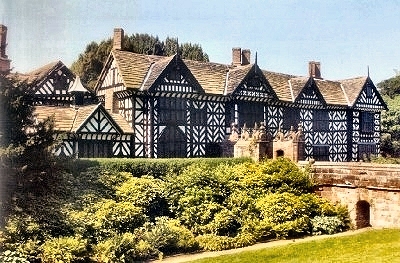 |
Speke Hall, Speke
Speke Hall is one of the most beautiful and interesting Tudor houses in the country. It originates in the late 15th century, though much of the present building was begun around 1530 by Sir William Norris and completed by his son Henry around 1600. It rambles irregularly around a central shady courtyard and originally had some sort of moat (the sunken grassy area in this picture), the front door being approached over a stone bridge. The house has passed through several hands over the years and has at times been in a very dilapidated state. It has now been superbly restored by the National Trust. |
|
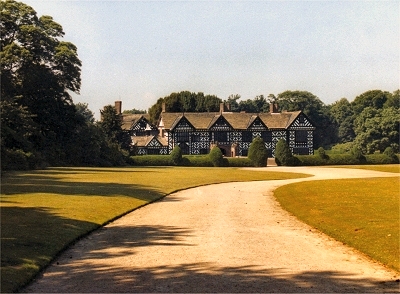 |
Speke Hall, Speke
Two of the finest rooms in Speke Hall, both dating from the 1530s, are the Great Hall and Great Parlour. However, much of the interior of the house is influenced by Victorian tastes, restoration work begun by Richard Watt in 1856 and continued especially by lessee Frederick Leyland, manager of the Bibby Shipping Company. His appreciation of the contemporary Arts and Crafts movement is evident in the William Morris wallpapers. Even so, there is plenty of much older plaster and woodwork, and, the Norris family being Roman Catholic, a priest hole. It is fascinating to wander around this complex but cosy interior. |
|
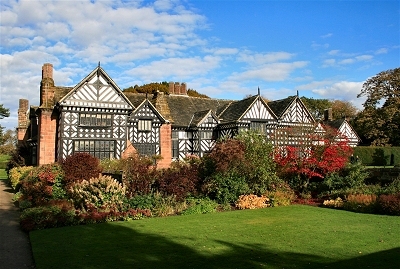 |
Speke Hall, Speke
This is the rear view of the house. It is set in magnificent grounds, with formal gardens, open spaces and woodland. How strange, then, that Liverpool Airport and vast industrial estates abut on all sides. You will notice the occasional aircraft, but on the whole the atmosphere here is rural and timeless. There is a little known 1870 etching of Speke Hall by James Abbott McNeill Whistler in the Liverpool Walker Art Gallery. It looks like the view from this side of the house but in mirror image because of the printing process. |
|
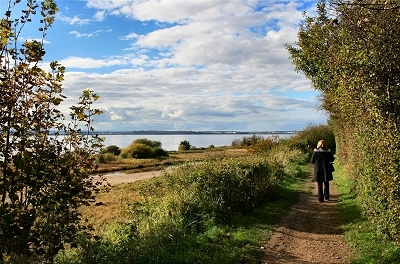 |
The Bund Walk, Speke Hall
The large earth embankment known as The Bund was built in the 1960s to protect Speke Hall from noise pollution arising from the nearby airport. There is an enjoyable walk along the top of it with superb views across the River Mersey towards the Welsh hills. |
|
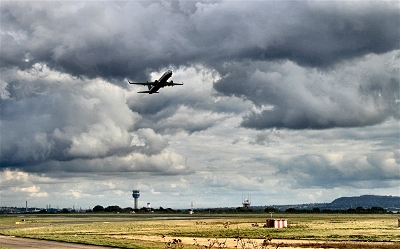 |
Liverpool Airport from the Bund Walk, Speke Hall |
|
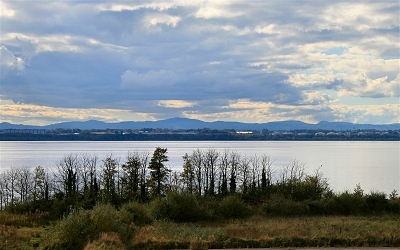 |
The Clwydian Range from the Bund Walk, Speke Hall |
|
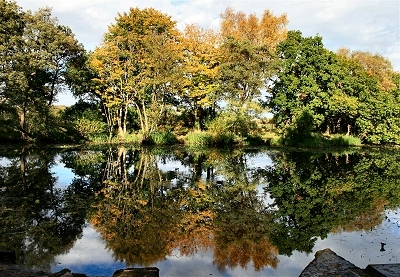 |
Pond near Speke Hall |
|
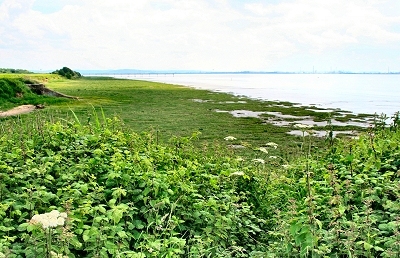 |
Speke and Garston Coastal Reserve
They kept this well hidden - I only discovered it recently. The coastal reserve is a haven of tranquility created from part of the original Liverpool Airport site and located between the Estuary Business Park and the River Mersey. It features meadows, wildlife habitats, footpaths and cycle trails. There are fine views over the Mersey and the area is popular with bird watchers. |
|
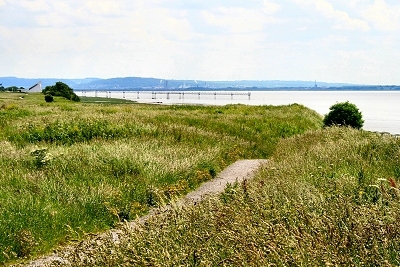 |
Speke and Garston Coastal Reserve
In the distance here is Helsby Hill with the light gantry for planes approaching the airport in front. |
|
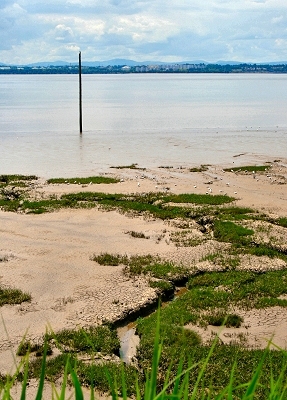 |
Speke and Garston Coastal Reserve
A view of the Clwydian Hills in Wales. |
|
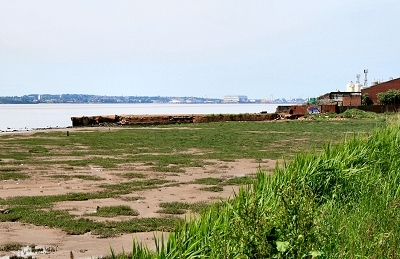 |
Speke and Garston Coastal Reserve
An old sandstone jetty. |
|
